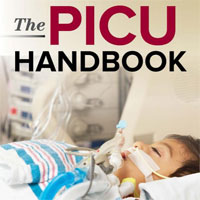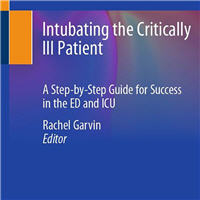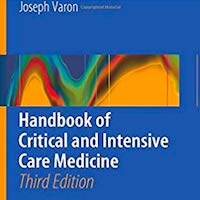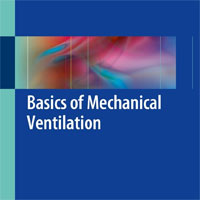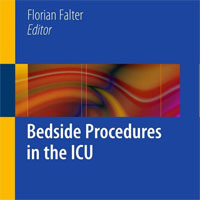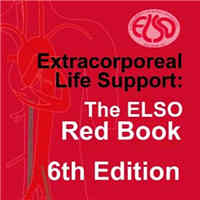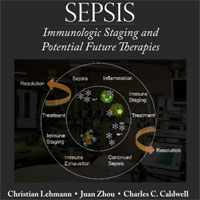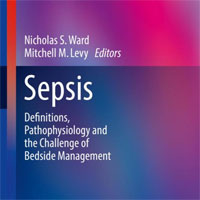Tag: pneumonia
Unlocking the Predictive Power of Nutritional Scores in Septic Patients
This study highlights the significant prognostic utility of nutritional status evaluation in septic patients admitted to internal medicine wards. Among the tools evaluated, the mNUTRIC score—likely because of its dual... read more
Unfractionated Heparin May Improve Near-term Survival in ICU Patients with Sepsis Pneumonia
This study found that early administration of heparin, particularly in sufficient doses (Heparin Sodium 5000 units/mL, 1 mL per dose, three times daily (TID)) for more than 7 d, was associated with reduced near-term mortality... read more
Handbook of Lung Targeted Drug Delivery Systems: Recent Trends and Clinical Evidences
Handbook of Lung Targeted Drug Delivery Systems: Recent Trends and Clinical Evidences covers every aspect of the drug delivery to lungs, the physiology and pharmacology of the lung, modelling for lung delivery, drug devices... read more
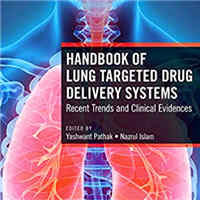
Analgosedation and Delirium Practices in Critically Ill Patients
Before the COVID-19 pandemic, the management of analgosedation was characterized by the predominant use of targeted protocols that favored priority on mild and dynamic sedation in critically ill patients. During the pandemic... read more
Prescribing Patterns and Effectiveness of Ceftolozane/Tazobactam in Immunosuppressed Patients
Treatment with Ceftolozane/Tazobactam (C/T) resulted in a high rate of clinical success in this real-world cohort of immunosuppressed patients, despite dosing that frequently deviated from labelled dosing. Pseudomonas... read more
Ventilator Associated Pneumonia in ICU: Identification, Evaluation and Prevention
This study highlights the significant prevalence of Pseudomonas aeruginosa (PA) as a major bacterial pathogen causing ventilator-associated pneumonia (VAP) in ICU patients, with a high detection rate of 71.7% in tested patients,... read more
Early Weaning From Invasive Mechanical Ventilation via HFNO vs. Conventional Weaning in ARF Patients
In patients with resolving acute hypoxemic respiratory failure (ARF), early extubation with high flow nasal oxygen is feasible and provides a better alternative to conventional weaning from invasive mechanical ventilation,... read more
New Insights: Mortality in Nosocomial Lower Respiratory Tract Infections
This multicenter, multinational study conducted in Europe and Latin America sheds light on the clinical landscape of nLRTI, which continues to be an essential issue in the context of critical care. We provide insights... read more
Rapid and Accurate Sepsis Identification Using AI
This study demonstrates that by providing streamlined predictions using CBC+DIFF data without requiring extensive clinical parameters, the AI-CDSS can be seamlessly integrated into clinical workflows, enhancing rapid, accurate... read more
Prolonged vs. Intermittent Infusion of Meropenem For Patients with Severe Infection
Prolonged infusion of meropenem is more effective than intermittent infusion in reducing mortality, improving clinical outcomes, and enhancing microbial eradication, without increasing adverse events. These benefits are... read more
Predictor of Weaning Outcome Using Sonographic Assessment of Post-intubation Laryngeal Obstruction
The study determined that both cuff leak volume and ultrasound-guided LACWD exhibited excellent sensitivity and specificity in predicting clinically significant upper airway blockage post-extubation, with cuff leak volume... read more
Clinical Outcomes of Early Phenotype-Desirable Antimicrobial Therapy for Enterobacterales Bacteremia
This is first study to compare clinical outcomes between patients with E coli, K pneumoniae, K oxytoca, and P mirabilis BSIs receiving early PDAT vs delayed PDAT using DOOR analysis. Receiving early phenotype-desirable... read more
Mechanical Ventilator-Associated Pneumonia in the COVID-19 Pandemic Era
The most common pathogens isolated in our ventilator-vssociated pneumonia (VAP) patients were Acinetobacter spp., Pseudomonas aeruginosa, Klebsiella pneumoniae, and Staphylococcus aureus. Resistance to the major classes... read more
Ventilator-associated Lung Disease: A Complex Reality in the ICU
Mechanical ventilation, by tracheal intubation or tracheostomy, is the common supplementary treatment for several reasons for hospitalization. Since the advent of long-term mechanical ventilation during the polio epidemic. In... read more
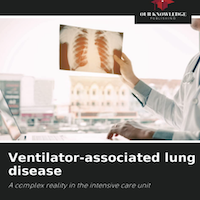
Emergence of Ventilator Associated Pneumonia in Critical Care Units
In intensive care unit, the care of critically ill patients is a primary component of modern medicine. Intensive care units create potential for recovery in patients who otherwise may not have survived. They are, however,... read more
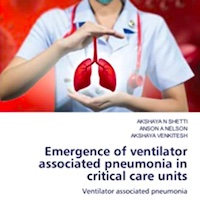
72‐h Infusion of Prostacyclin in Mechanically Ventilated Patients with Pulmonary Infection and Endotheliopathy
Acute respiratory failure (ARF) is common in critically ill patients, and 50% of patients in intensive care units require mechanical ventilation. The COVID‐19 pandemic revealed that COVID‐19 infection induced ARF... read more
Two Biomarkers Improve CRB-65 Predictability for Death Due to Community-Acquired Pneumonia
Augmenting CRB-65 (confusion, respiratory rate, blood pressure, and age 65 or older) score with troponin T high-sensitive (TnT-hs) and procalcitonin (PCT) help to predict death or intensive care unit (ICU) admission of patients... read more
Mini Bronchoalveolar Lavage vs. Endo-Tracheal Aspirate in Diagnosing Bacterial Pneumonia in ICU
This study supports the use of endotracheal aspirate (ETA) as a cost-effective and efficient alternative to mBAL for the diagnosis of pneumonia in intubated ICU patients, particularly in settings where resources are limited.... read more
The predictive value of LAR for determining the need for ICU admission among hospitalized patients with community-acquired pneumonia
In this study, lactate-to-albumin ratio (LAR) was found to be a good predictor of ICU admissions in hospitalized patients with CAP and was non-inferior to PSI or CURB-65 scores. LAR was found to be a good predictor of... read more
Personalized Therapies in ARDS
Acute respiratory distress syndrome (ARDS) can result from a variety of clinical conditions, causing lung injury either directly through local inflammation or indirectly because of systemic inflammatory mediators ARDS is... read more
Oxygenation Indices and Early Prediction of Outcome in Hypoxemic Patients with COVID-19 Pneumonia Requiring NIV Respiratory Support in Pulmonary Intermediate Care Unit
Oxygenation indices (OI) showed different effectiveness in predicting NIRT failure within 24 h of treatment in COVID-19 related pneumonia. This may be due to the multi-factorial pathophysiology of hypoxemia. Our study... read more
Risk Factors for Secondary Organizing Pneumonia and Acute Fibrinous and Organizing Pneumonia in Patients with COVID-19 Pneumonia
Based on our findings, we observed that age ≥50 years, diabetes mellitus, and severe hypoxemia on admission (SpO2 ... read more


